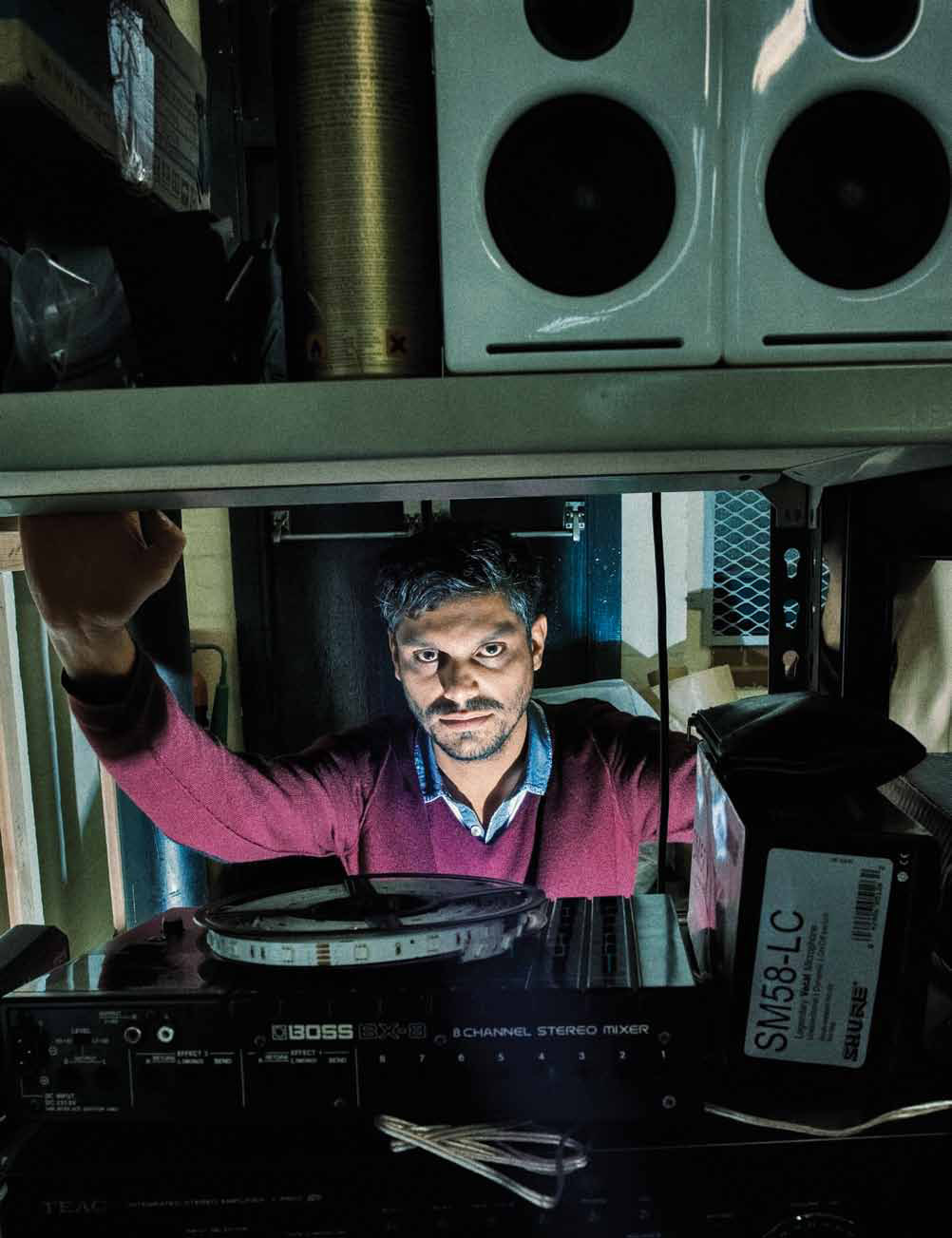Haroon Mirza

Usually transmission and interference are treated as antonyms, but in the disorientating audio-visual environments of 35-year-old London-born Haroon Mirza, the two are inextricably combined. Mirza’s pulsating sound sculptures—which often involve rewired electronics such as turntables, speakers, radios, keyboards, and televisions, and sometimes incorporate household items like lamps, dressers, and even buckets of water—can resemble three-dimensional sci-fi dada collages. But their sonic effect is a hallucinatory rhythm that seems both an eternal propulsive message beamed through the airwaves and the last mechanical gasps of a predigital world. Many of Mirza’s experiments catch the sound of light-or the “pulses of electricity that pass through LED lights when hooked up to the amplifier,” as he explains. “I can manipulate the circuits you find in Christmas lights. You’re actually hearing the electricity that runs through them.” For Mirza, who won the Silver Lion Award for Most Promising Young Artist at the 2011 Venice Biennale and just opened his first solo New York show at the New Museum in September, sonic experiments, however intentionally composed, are not a form of music. “When I have a sound component coming from something jumping up and down on a speaker or from interference from a radio, I associate that with noise rather than a musical element,” he says. Likewise, he has used soundproof foam to create visual noise blocks, arranging their triangular shapes into geometric Frank Stella-esque wall grids. Mirza’s fascination with audio (and all of its equipment for transmitting information, which are the nuts and bolts of his work) stems from Marshall McLuhan’s “acoustic space” concept, in which the media philosopher compared the distribution of media to that of sound. “Sound travels spherically, omni-directionally,” Mirza explains. “There is also a time limit to sound. And while visual space ends at the wall, a loud noise can penetrate it. McLuhan saw media having an acoustic-like structure. From there, I just found the actual pragmatics of acoustic space interesting.” This coming June, Mirza is bringing his state-of-the-art sound creations to a whole new level. As part of a project with the Hepworth Wakefield in West Yorkshire, he is taking over the Emley Moor Transmitting Station, a telecommunications tower that is the largest freestanding structure in the United Kingdom. Radio is broadcast to the area from the tower and Mirza has plans “to pimp it.” “I’m going to use the lights on the tower to generate sounds and transmit them,” he says. “So you can tune in to your car radio if you’re driving by the tower and you’ll hear the sounds generated when the lights change, flash, or fade.”
PHOTO: HAROON MIRZA IN LONDON, OCTOBER 2012. ALL CLOTHING: MIRZAÂ?’S OWN.






